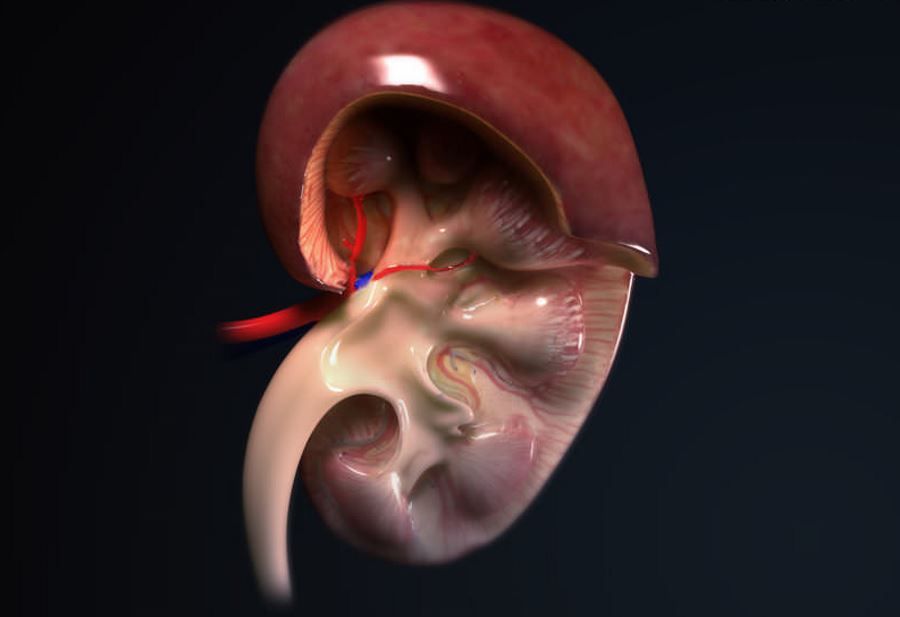Liquid crystals in nanopores produce surprisingly high negative pressure
Negative pressure governs not only the Universe or the quantum vacuum. The Institute of Nuclear Physics of the Polish Academy of Sciences in Krakow presented a method that for the first time allowed estimating the magnitude of negative pressure in spatially confined liquid crystal systems.
Negative pressure is common in nature, on top of many scales. In the plant world, attracting intermolecular forces (and not at all dispersing thermal movements) guarantee the flow of water into the tops of any tree taller than ten metersow. On the scale of quantumoIn the pressure of virtual particles of false proThe heat leads to an attractive force, appearing, for example, between two roThe adjacent metal plates (the famous Casimir effect). And on the scale of the Universe, the cosmological constant is responsible for accelerating the expansion of space-time.
– The fact that negative pressure appears in nanopore-filling liquid crystals was known earlier. However, it was not known how to measure the value of this pressure. We, admittedly, also can not do it directly, but we proposed a method, ktora allows this pressure to be reliably estimated – mowi Dr. Tomasz Rozwadowski of the Institute of Nuclear Physics of the Polish Academy of Sciences (IFJ PAN) in Krakow, first author of the publication in the journal „Journal of Molecular Liquids”.
Krakow physicists looked at a liquid crystal known as 4CFPB, made up of molecules 1.67 nm long with a molecular diameter of 0.46 nm.
The experiments looked at changes in rodifferent parametersoin the liquid crystal (m.in. dispersion and dielectric absorption). The measurements made it possible to conclude that the increase in pressure was accompanied by a slowdown in the movement of theoin molecular. However, liquid crystal molecules placed in nanopores moved faster the narrower the channels they were in. The data also showed that the density of liquid crystal molecules increases with increasing pressure, while in nanopores it decreases.
The temperatures also changed, at whichohe liquid crystal went from an isotropic liquid phase (with particles arranged chaotically in space) to the simplest liquid crystalline phase (nematic; the particles are still arranged chaotically, but they already align their long axes in the same direction), and then to a glassy solid phase. As the pressure increased, the temperatures of the phase transitions increased. In nanopores – were decreased.
– With increasing pressure, all the liquid crystal parameters we studied changed inversely with decreasing diameter nanopores. This suggests that the conditions in the nanopores correspond to reduced pressure. And since the molecules of the liquid crystal in the tubules prob are pushing their walls apart, as if they were expanding, we can mown about negative pressure relative to atmospheric pressure, whichore wall compresses – mowi Dr. Rozwadowski.
The observed changes in the parameteroin physics made it possible for the first time to estimate the value of the negative pressure appearing in the liquid crystal filling the nanopores. The linear nature of these changes suggests that the negative pressure in nanopores can reach almost -200 atmospheres. This value is an order of magnitude greater than the negative pressure responsible for water transport in trees.
– Our work is fundamental, providing information about the very physics of the phenomena occurring in liquid crystals inside nanoporesow o rodifferent diameters. However, liquid crystals find many applications, for example, in displays, optoelectronics and medicine, so any new description of how these substances behave at the nanoscale under such specific spatial conditions can carry practical information, Dr. Rozwadowski points out.
Experiments without nanoporow, under normal and elevated pressure conditions (up to about 3,000 atmospheres), were conducted at the University of Silesia in Katowice, Poland. On the other hand, systems in silicon membranes with non-intersecting nanopores with diameters of 6 and 8 nanometersow was studied at the University of Leipzig (Germany).
The research on liquid crystals under spatial confinement was funded by a SONATA grant from the National Science Center.


